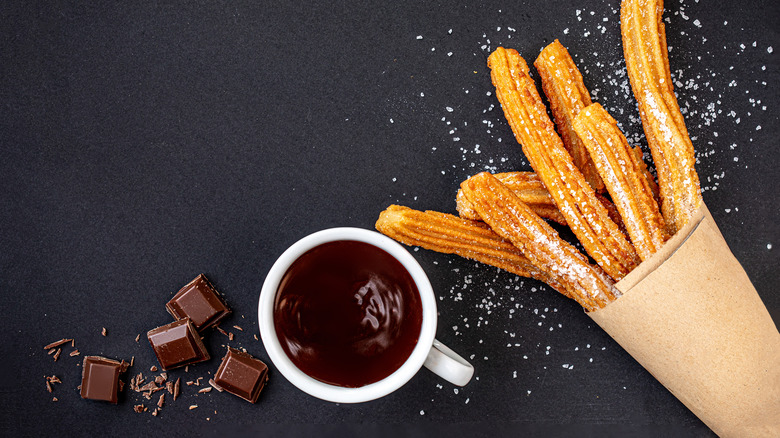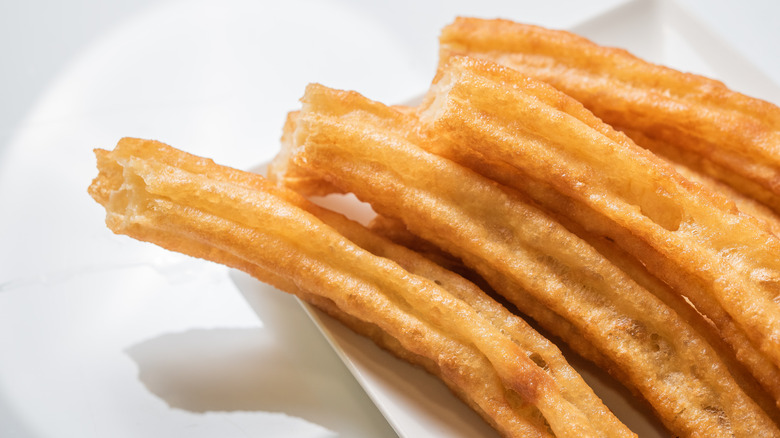Churros Vs. Porras: What's The Difference?
Spanish cuisine is a treasure trove of the sweet and the savory. The country's beloved and traditional tapas are a great excuse to share a meal and try a variety of foods with distinctive flavors. Popular Spanish dishes like paella are known in America, though the country's culinary offerings also include the likes of tortilla Española, migas, and morcilla.
But no true taste of Spain is complete without a little something sweet. Dessert takes the cake in any course of meals, and Spanish treats are as far-reaching as any of its main dishes. According to The Culture Trip, flan is one of Spain's most traditional desserts, known for its jiggly texture and sweet caramel topping. It's frequently on dessert menus, and can enjoy company with arroz con leche, crema catalana, and, of course, churros.
Yes, churros — whether accompanied by chocolate or just plain and simple — are perhaps the most well-known Spanish dessert. Yet churros are not the only doughnut derivative Spain has to offer. Porras are another fried Spanish treat that bring their own texture and appearance to the dessert table. But let's not get ahead of ourselves.
Churros are Spain's ever-trending fried treat
Fairs have funnel cakes, coffee shops have doughnuts, and Spain has churros. The European version of fried dough has made it across the U.S., not to mention the world.
The BBC suggests that the churro has likely grown in popularity due to its shape. The most authentic Spanish churros are quite thin, and this lanky appearance creates a balance of textures that pair a delicious, fried coating with a fluffy, doughy inside.
The churro dough itself is surprisingly simple to make, consisting only of water and flour. A basic recipe calls for these ingredients because it's the frying that gives the churro its distinctly delicious taste. To up the ante (and the flavors) have a chocolate dipping sauce and/or hot chocolate ready to accompany your churro. According to The Culture Trip, Madrid chocolate shop, Chocolatería San Ginés, sells churros and chocolate side-by-side, making for the sweetest treat of all.
The porra is the churro's wider, doughier cousin
While churros are better known, they're not Spain's only fried finger food — nor are they interchangeable with their (almost) doppelganger. The porra (a treat commonly sold under the name churro) is thicker and spongier than its popular cousin.
Indeed, Spanish goods shop La Tienda describes porras pastries as larger and softer than churros — though they're similar in their crispy, golden appearance and stick-like shape. Beloved in Spain, porras are lighter than churros and not quite as crispy, but they taste similar, and are also commonly dipped in melted chocolate. According to the BBC, the difference between the two is therefore subtle; recipes for porras utilize baking powder, and fine, highly glutinous flour, which leaves the dough with a lighter, puffier consistency. La Tienda also says they are fried using olive oil, which surely imparts a flavor distinct with churros made using vegetable or seed oils.
With such minute differences, it's easy to confuse churros with porras. But since both are delicious and either dipped or dusted with something sweet, you really can't go wrong with either one.


